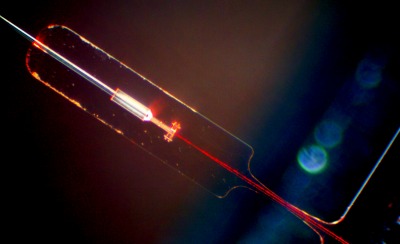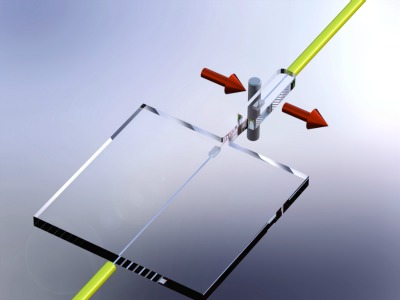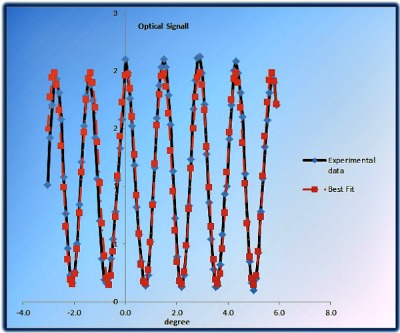 Engineers that specialize in precision applications often use flexing elements to avoid some of the drawbacks associated with other dynamic components. Typically, flexures are made from metals, although many metrology practitioners have argued that, fused silica glass with a near-zero coefficient of thermal expansion, and its near-perfect elastic behavior, would provide exceptional characteristic suited for demanding applications [See for example 1]. Precision-machined flexures made out of fused silica are available from Translume.
Engineers that specialize in precision applications often use flexing elements to avoid some of the drawbacks associated with other dynamic components. Typically, flexures are made from metals, although many metrology practitioners have argued that, fused silica glass with a near-zero coefficient of thermal expansion, and its near-perfect elastic behavior, would provide exceptional characteristic suited for demanding applications [See for example 1]. Precision-machined flexures made out of fused silica are available from Translume.
Unlike other materials commonly used to fabricate high-quality flexures, fused silica is also transparent. This can be exploited to combine mechanical and optical functionalities in a metrology-grade component. To illustrate this uncommon juxtaposition, we previously fabricated fused silica flexures with straight integrated optical waveguides.
 We have pursued this avenue and we can now report on the fabrication of a notch flexure made out of fused silica glass with an imbedded Mach-Zehnder waveguide-based interferometer. While this interferometer could be written anywhere inside the fused silica substrate, for this demonstration we chose to locate it at the substrate mid-plane and to center it along the notch flexure central axis. This geometry maximizes the optical pathway difference between the two arms of the interferometer when the flexure is deflected away from its rest position.
We have pursued this avenue and we can now report on the fabrication of a notch flexure made out of fused silica glass with an imbedded Mach-Zehnder waveguide-based interferometer. While this interferometer could be written anywhere inside the fused silica substrate, for this demonstration we chose to locate it at the substrate mid-plane and to center it along the notch flexure central axis. This geometry maximizes the optical pathway difference between the two arms of the interferometer when the flexure is deflected away from its rest position.
The system optical throughput was measured at 1550-nm (the waveguides are single-mode at this wavelength) as a function of the bend angle (as shown in the graph below). A splitter is used to evenly divide the input signal between the two arms of the interferometer. A mirror image element is used downstream to recombine the two arms into a single outgoing single-mode waveguide. Single mode optical fibers (SMF-28) are connected at both the input and the output.
 As the flexure arm is pushed away from its rest position, the output signal is recorded. This signal varies as a function of the optical path difference between the two arms. This optical path difference depends on the geometrical path difference and the stress optic coefficient of fused silica (i.e. the change of index of refraction as a function of stress applied to the glass.) According to Schott documentation, the stress optic coefficient for fused silica is 3.4 x 10-12 Pa-1 (Note this value was measured at 589.3 nm.)
As the flexure arm is pushed away from its rest position, the output signal is recorded. This signal varies as a function of the optical path difference between the two arms. This optical path difference depends on the geometrical path difference and the stress optic coefficient of fused silica (i.e. the change of index of refraction as a function of stress applied to the glass.) According to Schott documentation, the stress optic coefficient for fused silica is 3.4 x 10-12 Pa-1 (Note this value was measured at 589.3 nm.)
References:
- “Self-calibrating optomechanical accelerometer with high sensitivity over 10 kHz” Felipe Guzman Cervantesy, Lee Kumanchik, Jon Pratt, and Jacob M. Taylor. arXiv:1303.1188v2 [physics.optics] 10 Oct 2013
